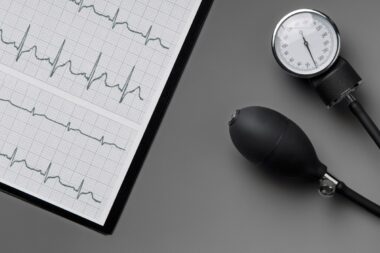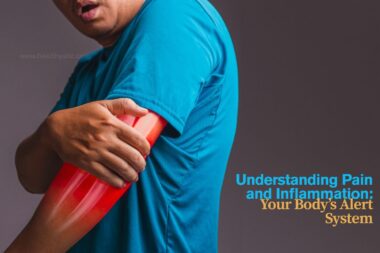Experiencing abnormal heart rhythms can be a frightening situation. It’s important to know what is normal for a healthy adult heart and what constitutes an arrhythmia or irregular heart rhythm.
Some circumstances cause mild and temporary arrhythmias. Most of us have felt a rapid heartbeat during a stressful situation. But heart health is not something you should ignore. That may leave you wondering, when should I be concerned about heart arrhythmia?
Normal Heart Rhythms
A normal adult’s resting heart rate ranges from 60 to 100 beats per minute. For healthy individuals, a lower resting heart rate means the heart is working more efficiently and denotes cardiovascular fitness.
Some highly-trained athletes can have resting rates near 40 beats per minute. However, if you are not a top-tier athlete with a resting heart rate below 60, that is an arrhythmia called bradycardia. A resting heart rate consistently above 100 beats per minute is an irregular heart rhythm called tachycardia.
Now that you know the numbers for normal heart rhythms, let’s explore heart arrhythmias, also called abnormal heart rhythms.
Types of Heart Arrhythmias
Arrhythmias occur when the electrical signals that coordinate your heartbeats experience disruptions. The heart may beat too quickly or in an irregular pattern. There are five main types of heart arrhythmias. The names denote where the irregular beats begin and the speed of heart rate they cause.
1. Tachycardia
When an adult’s resting heart rate is consistently above 100 beats per minute, they are tachycardic. These irregularities can be life-threatening.
2. Bradycardia
A resting heart rate below 60 beats per minute in a person who is not a top-tier athlete is cause for great concern.
3. Premature Heartbeat
This common arrhythmia is an extra beat that does not usually cause other symptoms. In healthy adults, there is no cause for concern or treatment. For adults with heart disease, a premature heartbeat can lead to other irregular heart rhythms.
4. Supraventricular Arrhythmias
Four types of tachycardic arrhythmias begin in the atria or atrioventricular (AV) node.
The AV node conducts electrical signals between the atria and the ventricles.
Atrial flutter is a non-life-threatening rapid, regular heartbeat. The atria beat more rapidly than the ventricles. For example, you may experience four atrial beats to one ventricular beat. Dizziness and shortness of breath may accompany this arrhythmia. The concern you face with atrial flutter is when it leads to atrial fibrillation.
Atrial fibrillation (AFib)
AFib is a rapid, irregular heartbeat. The muscles quiver rather than beat leading to inefficient blood pumping to the rest of the body.
PSVT
Paroxysmal supraventricular tachycardia (PSVT) is a rapid, irregular heartbeat that suddenly begins and ends.
Wolff-Parkinson-White Syndrome
Wolff-Parkinson-White syndrome is a type of PSVT. In this condition, there is a disruption in the electrical signals from the atria to the ventricles. The ventricles beat too fast, but since the cause is in the atria, we still classify this condition as supraventricular arrhythmia.
5. Ventricular Arrhythmias
Supraventricular arrhythmia is an irregular heart rhythm that takes place in the upper chambers of the heart. Ventricular arrhythmias are abnormal heart rhythms that happen in the lower chambers of the heart and require immediate medical attention as they can stop the supply of blood from your heart to your body.
Ventricular Tachycardia (VT)
Ventricular tachycardia is a condition that occurs due to a problem with the electrical impulses of the heart. It occurs when the lower ventricles of the heart beat rapidly. It can last for a few seconds or longer and can put you at risk for ventricular fibrillation.
Ventricular Fibrillation (VFib)
VFib is a rapid and irregular heartbeat. It is a life-threatening condition that starts in the bottom heart chambers. It can lead to cardiac arrest and death. It is vital to seek emergency care if experiencing ventricular fibrillation due to the high risk of death.
Tornadoes de Pointes
Tornadoes de Pointes is a rare form of ventricular tachycardia involved in Long QT syndrome. It can cause sudden cardiac arrest and ventricular fibrillation.
Accompanying Symptoms
Some irregular heart rhythms don’t have any accompanying symptoms and are picked up on by your physician. However, some general symptoms accompany many arrhythmias.
- Racing heartbeat (tachycardia)
- Chest pain
- Shortness of breath
- Fluttering feeling in the chest
- Lightheadedness
- Sweating
- Fainting or near fainting
Assessing and Treating Irregular Heart Rhythms
When you, a friend, or a co-worker experience an irregular heartbeat, it’s vital to remain calm and assess the situation.
It’s helpful when one or more people in your office, church, or friend group have some training in assessing and treating irregular heart rhythms.
1. Basic Life Support (BLS) Training
BLS training is not basic in the sense that it is elementary, but it forms the foundation of emergency cardiac care. The training is geared toward people in the medical field, however, anyone can acquire a BLS certification.
In BLS training you can expect to learn:
- CPR for adults, children, and infants
- Rescue breathing for adults, children, and infants
- Use of a bag-valve mask or pocket face mask for rescue breathing
- CPR as a solo rescuer or two-person rescue team
- Use of an AED (automated external defibrillator)
2. Advanced Cardiovascular Life Support (ACLS)
You’ll obtain a more advanced certification from ACLS training. In addition to the information in BLS training, you learn to use more tools and techniques. Most medical professionals who work in emergency care must be ACLS certified.
- Use of electrocardiograms
- Intubation
- Intravenous medication
3. Recertification
You must recertify your BLS and ACLS certifications every two years. You can take an abbreviated class to keep your certification up-to-date.
Final Thoughts
So, when should I be concerned about heart arrhythmia? While everyone may experience an irregular heart rhythm at some point in life, there are some situations where you should seek medical attention.
If you have episodes of your heart skipping a beat or racing, make an appointment with your primary care physician.
If you experience shortness of breath, dizziness, chest pain, or other accompanying symptoms, seek emergency medical attention.
If someone nearby has had BLS training or ACLS training, they can help you.
Thumbnail Credit: Freepik

Kate is the Communications Director for the American Medical Resource Institute (AMRI), where they’ve trained over a million healthcare professionals to study for, earn and maintain life support certifications that allow them to better respond to cardiac emergencies. When not in the office, you can find Kate practicing her tennis skills. She also frequents live music venues and is always looking for her next creative hobby.





































